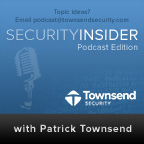How LinkedIn Could Have Avoided a Breach |
SHA-1 is perhaps the most often encountered hash algorithm in use today. But its use in digital signatures will be restricted by NIST in the near future. NIST has already restricted use of SHA-1 for federal organizations starting back in 2010, but the weaknesses found in the SHA-1 algorithm has prompted NIST to restrict it’s use for all digital signature generation.
Digital signatures have two aspects: signature generation and signature verification. In January 2011 NIST issued Special Publication 800-131A titled "Transitions: Recommendation for Transitioning the Use of Cryptographic Algorithms and Key Lengths." Digital signature generation is addressed in Appendix B.2, Digital Signature Generation Using Asymmetric (Public) Keys and SHA-1. Here NIST states, "Some applications, such as signing a public key certificate, are very high risk and the use of SHA-1 in those applications should be avoided as much as possible. In NIST’s view, after 2013, the risk is unacceptable in all applications, and the use of SHA-1 when generating a digital signature is not allowed after that date."
Signature verification of already calculated hashes will still be allowed in what is termed a "legacy-use" period.
SSL uses X.509 certificates which are frequently seen with the Signature Algorithm attribute sha1WithRSAEncryption. As December 31, 2013 is fast approaching you may want to consider recreating these certificates with one of the newer SHA-2 algorithms such as SHA-256 or SHA-512. For example when creating certificate signing requests with OpenSSL try using "openssl req -new -sha256 etc...".
NIST has good reason to restrict the use of SHA-1 after 2013. Not only have experts found weaknesses in the SHA-1 algorithm through differential attacks, companies using SHA-1, such as LinkedIn, have already fallen prey to hackers. LinkedIn’s data breach this year could have likely been prevented if they had been using stronger hash algorithms with proper salting.
Is your company still using SHA-1 hash algorithms? Learn more about why you should move to SHA-2 or higher in our podcast, “How LinkedIn Could Have Avoided a Data Breach” featuring security expert, Patrick Townsend.



 The modern enterprise runs on a variety of computing platforms. The concept of being "an IBM shop" has gone the way of the buggy whip. With cloud computing and virtual machine technology, you may not even know what your hardware base is. This has caused those seeking to realize the benefits of standardization to shift their focus to the software.
The modern enterprise runs on a variety of computing platforms. The concept of being "an IBM shop" has gone the way of the buggy whip. With cloud computing and virtual machine technology, you may not even know what your hardware base is. This has caused those seeking to realize the benefits of standardization to shift their focus to the software.
